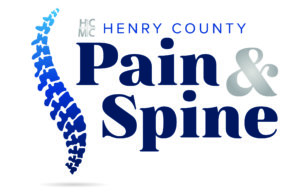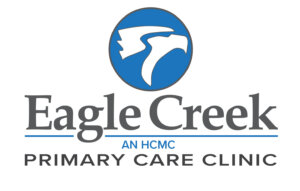
According to a 2017 Centers for Disease Control and Prevention study, Clostridium difficile – or C. diff – is responsible for nearly 500,000 infections among patients in the United States annually, making it the most frequent microbial cause of healthcare-associated infections (HAIs) in American hospitals.
Of those with an initial diagnosis of C. diff, about 29,000 died within 30 days, and 15,000 deaths were estimated to be directly attributable to the bacterial infection. Older Americans are disproportionately impacted by C. diff with more than 80 percent of deaths associated with the HAI occurring in patients aged 65 and over. Additionally, the infection has been linked to as much as $4.8 billion in extra healthcare costs for hospitals in the U.S.
Against this sobering statistical background, Henry County Medical Center launched a comprehensive education and application campaign to keep the dangerous bacterium at bay. Although the hospital already had C. diff rates that consistently came in below other rural hospitals and statewide organizations, the team believed they could do even better by applying a series of best practices.
Jacqueline O’Brien, MSN, RN, CIC, joined the hospital in January 2017 to oversee infection prevention and employee health, along with leading staff education efforts. Certified in infection control and epidemiology, O’Brien began the quest to further minimize C. diff by attacking the HAI on multiple fronts, including better identifying those at risk and instituting steps to prevent the bacterium from spreading. “Even though we were doing very well, we hurried up and put new evidence-based practices in place to be sure we continued to do well,” she said of process changes made soon after her arrival.
“You can get C. diff two ways: 1) you can get it by contact from contaminated hands, and 2) the other way is to become colonized with it,” O’Brien noted.
Because it’s difficult to kill and can linger on surfaces like faucets, hospital door handles, etc., it’s easy to spread via touch. “When someone is having diarrhea with C. diff, it’s the equivalent of having a thin film of stool painted on every surface in the room,” she explained.
Appropriate use of antibiotics, O’Brien added, is a critical component of limiting the deadly bacterium. With estimates that 30-50 percent of skilled nursing patients are colonized with C. diff, it’s far too easy to set off an active infection through improper use of antibiotics that kill the normal gut flora, giving the bacterium free reign. “It’s sitting there dormant until we inappropriately treat with antibiotics,” she noted. “Now C. diff doesn’t have to compete. It’s in complete control and has nothing to do but replicate.” For that reason, O’Brien continued, “We’re working on antibiotic stewardship to limit the use of fluoroquinolones, floramycin, clindamycin and other high risk antibiotics.”
In addition to antibiotic stewardship, the “CDI bundle” approach taken by Henry County Medical Center (HCMC) included multifaceted interventions from improved hand hygiene and environmental disinfection to patient and room isolation measures. O’Brien said key elements of the bundle included:
- Empiric precautions for those with diarrhea until infectious status is ruled out,
- Private rooms for all inpatients,
- Contact precautions for 48 hours after diarrhea has ceased,
- Wearing gloves, in conjunction with appropriate hand hygiene, to decrease the concentration of diff organisms on the hands of healthcare personnel,
- Terminal and daily room cleaning with a sporicidal agent, and
- Expanded education for nursing and environmental services staff.
Although, HCMC was already using contact precautions, O’Brien said one of the first steps was to move to ‘contact-plus’ precautions that instituted different signage to alert staff when infection was a possibility, enhanced education efforts about hand-washing, and changed the type of cleaner used by environmental services. Sporicidals were added to the cleaning regimen in any room where someone was suspected of having C. diff. O’Brien explained that just as it’s impossible to reach a walnut by simply squeezing the outer shell, it’s equally unlikely the bacterial spores would be eliminated from a simple wipe down. “Bleach and sporicidals are the only cleaners that kill the spores,” she noted.
While that works well in cleaning a room, she pointed out bleach and high level disinfection aren’t practical for hand hygiene. “The spores can’t respond to soap. It can’t inactivate the bacteria, so you have to use friction to kill the bacteria and wash it down the sink to remove it,” she said. Despite what a lot of people might think, O’Brien added hot water won’t do the trick either – it would have to be rapidly boiling to begin to make a difference, which isn’t very conducive to washing hands. “It has everything to do with the mechanical use of friction,” she said of the only realistic way for healthcare workers to rid themselves of the spores and keep from spreading the deadly bacteria to other patients and coworkers.
One of the biggest changes was to get staff to implement full precautions if there was even a suspicion that C. diff was present. “I’m going to treat it like it is until I know it isn’t,” O’Brien said of the subtle, yet powerful, shift in mindset. “If someone has diarrhea, you should assume it is infection until labs come back to prove it’s not.”
As with all effective process improvement projects, O’Brien said communication has been a critical component of the hospital’s success. It doesn’t do much good for a nurse to know or suspect a patient has C. diff if that information isn’t shared across the continuum of care so that everyone entering the room and working with the patient is aware of the danger and takes proper precautions to keep the bacterium from spreading to others.
Happily, O’Brien said the staff has been very receptive to the changes. “From an administrative level, I’ve had absolute support,” she added. That willingness to adopt new processes through adherence to the CDI bundle has led to impressive results.
“We, at HCMC, are patient focused, have safety in mind, and want our community to be healthy, said Lisa Casteel, HCMC CEO. “We are glad to participate in initiatives that continue to ‘Grow Us Forward’ in reaching these goals. And, a Director with the knowledge and determination like Jackie, pushes us along this path.”
“With two exceptions, we have been at zero cases of C. diff for close to two years,” she noted. The two spikes – in October 2017 and April 2018 – came during months when the hospital was particularly busy. “Our numbers are so low that once case can spike the rate,” O’Brien explained. However, she continued, those increases also serve as a reminder that C. diff is always a threat.
While there will always be some presence of C. diff, particularly in elderly patients, O’Brien noted the evidence-based practices put in place mean it is possible to provide nurturing, compassionate care while keeping the bacterium from activating or spreading. “We can take great care of our patients and keep from transmitting the dangerous infection,” she concluded.
The Tennessee Center for Patient Safety, a department of the Tennessee Hospital Association, develops and shares hospital and health system success stories and promotes best practices.










